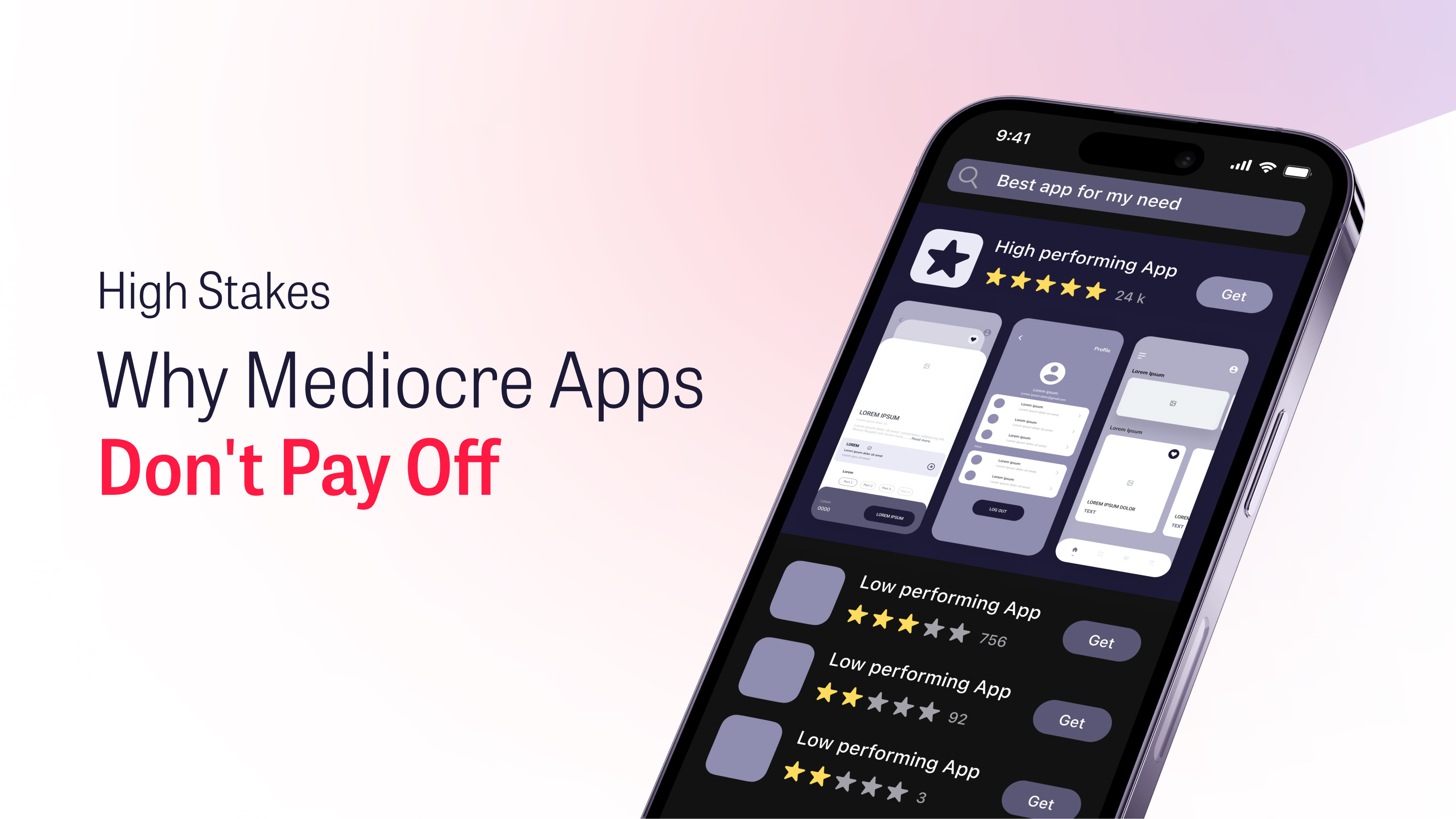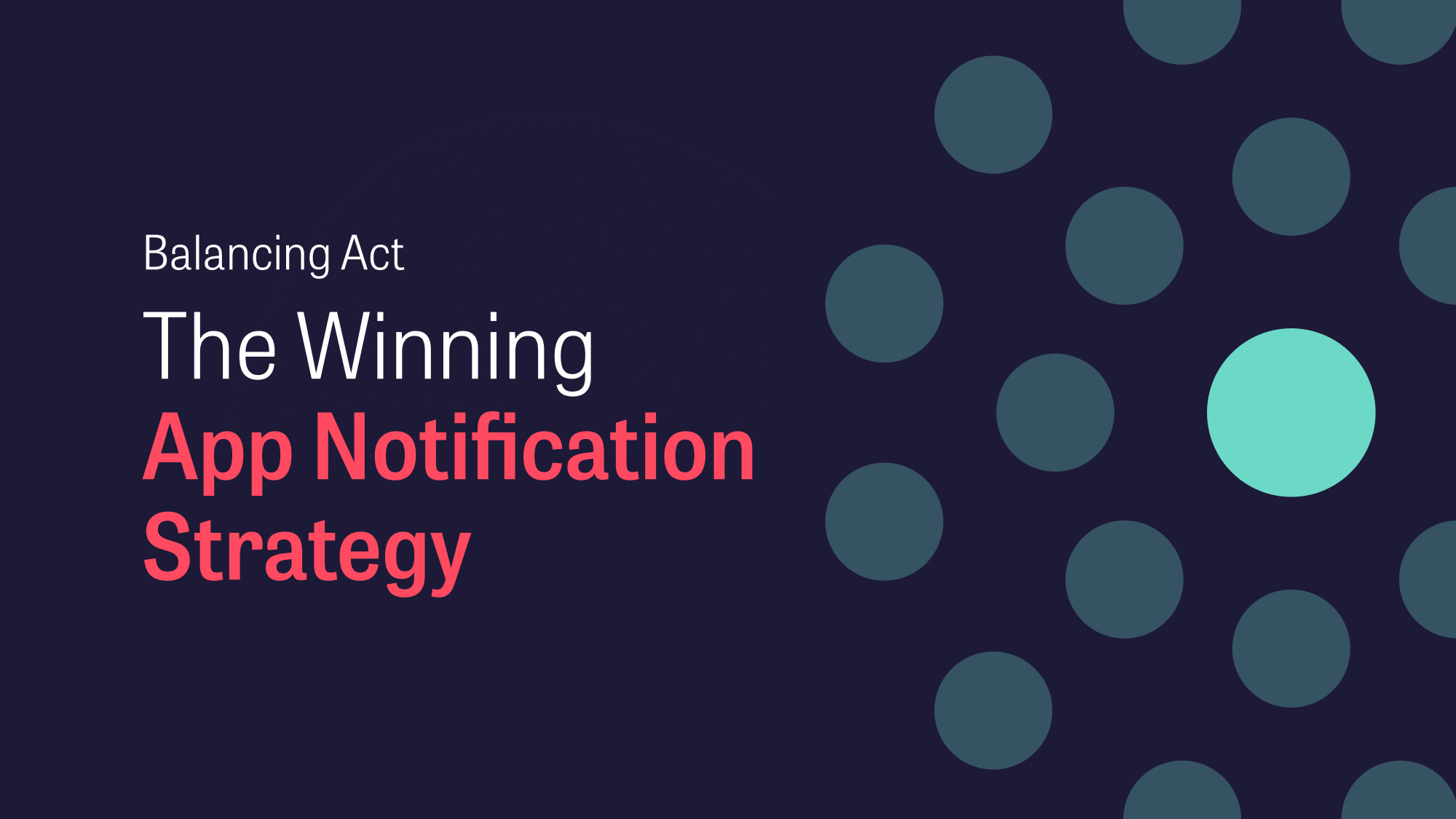
Engaging content is an absolute must-have, and it’s not just reserved for entertainment, streaming and media apps. While the quality of the content is undeniably the foremost factor in determining the value of a service, the app itself plays a pivotal role as an enabler.
In 2023, we conducted a survey with over 3000 Danish people between 18 and 70 years of age about their app preferences. It’s one of the largest studies on app usage conducted in Denmark. Five major themes were identified, which have been turned into the Mobile App Trends 2024 report. Get access to the full report below 👇
Building Exceptional Content Apps: The Personalisation Imperative
Without the proper introduction and presentation of the content, users may never have the opportunity to fully realise the true worth and potential of the content. In essence, the app acts as the gateway to the content’s value, shaping the user’s initial impression and overall experience.
Therefore, the app serves as the crucial infrastructure for content delivery. Its primary function is to present content in a manner that facilitates its accessibility to users and, ultimately, enables the delivery of value. The app acts as the bridge that connects the content’s essence with its intended audience, ensuring that it can fulfil its purpose effectively.
There are three key components to having a great content-based app through personalisation:

Mobile App Trends 2024: Three key components for content-based app success
💁♀️ Being personally Relevant to the user
🌟 Having a Rich and Vast content universe for inspiration and discovery
👌 Allowing Personalisation of libraries and selecting relevant content
When examining the most popular apps among Danish users, entertainment apps consistently occupy top positions when compared to apps in other categories. The smartphone serves as an invaluable tool, allowing users to conveniently access and manage their content on the go. Additionally, according to the recent data from Mobile App Trends, social media apps remain some of the most commonly used apps in Denmark, with 52% of Danes using them on a daily basis. Following closely behind are media apps, with 36% of users engaging daily with entertainment content such as music and videos. These findings suggest a strong interest in communication and content consumption among Danish smartphone users. The fact that users consume so much content is a driving factor for businesses to optimise their offerings and gain competitive advantage.

Mobile App Trends 2024: App usage frequency within different sectors
The Art of Personalised Content Discovery: A Winning Strategy
Apps have a brief window to persuade users of their worth. For content-driven apps, where the primary value lies in the content they offer, facilitating effortless discovery tailored to individual preferences is crucial. If the app fails to consistently provide users with content that aligns with their interests, the overall value of the app service will rapidly decline. The core focus is on enhancing discoverability and findability.
Taking streaming apps as a use-case, the spiderweb chart below, clearly illustrates that the primary factor determining the success of streaming apps is the quality of their content. The average for all categories also paints a picture of importance of a good design, content and usability. How users resonate with the content and the brand is an important factor for businesses to consider when creating an app, and personalisation is the key word to delivering this.

Mobile App Trends 2024: Streaming app performance compared to average app performance
Achieving a high level of personalised content discovery and findability can be effectively accomplished through a combination of strategies, including the collection of first-party data and the utilisation of recommendation engines. By responsibly and ethically collecting and analysing data, apps can gain valuable insights into individual user behaviour and preferences. This, in turn, enables them to offer content that is highly relevant to each user, thereby enhancing the overall user experience. Villads explains how 👇
By combining the insights derived from first-party data with the precision of recommendation engines, apps can create a dynamic ecosystem where users consistently discover content that resonates with their preferences. Recommendation engines analyse a user’s behaviour, such as the content they’ve consumed, liked, or shared, and then generate personalised recommendations based on patterns and similarities observed among users with similar profiles. This not only enhances the app’s value proposition but also fosters user loyalty and encourages prolonged engagement.
There's a direct link between a great user experience (UX) and a compelling return on investment (ROI). Read more 👇
Content Quantity and Quality: The Twin Pillars of App Popularity
Popularity and engagement don’t solely rely on quantity. However, in a world overflowing with an endless stream of content, it becomes vital to offer a substantial amount of content that is both abundant and of high quality. The content selection within the app must be expansive, offering users a nearly inexhaustible array of options. This breadth ensures variability and caters to a wide range of tastes and preferences. Users should feel that their exploration journey within the app never reaches an endpoint; it should be a continuous quest for new and exciting content. So, how do we achieve this? Regular additions of fresh content are essential. These additions breathe life into the app, ensuring that users always have something new to discover.
Why does this matter? According to the Mobile App Trends, “Great content” emerges as the second most influential factor, right after “Simplifies daily life,” in driving app value. While this distribution of importance is relatively consistent, it’s noteworthy that users consistently place significant value on the quality of content provided by an app. This phenomenon extends beyond just streaming apps and applies across various app categories. In fact, even in banking apps, the category with the highest emphasis on “Great content,” users recognise the importance of a rich and valuable content experience.
How do you personalise the app experience? Ulrik gives you some examples below 👇
The presentation of content suggestions also plays a crucial role. To keep the experience engaging, suggestions should be presented in a shuffled manner, preventing predictability and encouraging users to venture into uncharted territory. A truly effective use of personalisation strategies goes beyond merely catering to existing user preferences. It actively seeks to break the user’s preference bubble from time to time, introducing them to new and unexpected content that aligns with their interests but also expands their horizons. By striking a balance between familiarity and novelty, apps can provide users with a dynamic and enriching content experience that keeps them engaged and eager to explore further.
Want to dive into more relevant topics for app success? 👇
Balancing Discoverability and Content Management in Apps
At the heart of this topic is the fundamental principle that users must have the ability to save relevant content, build their own libraries, and set preferences within the app. This degree of personalisation is what transforms a simple digital tool into a meaningful and engaging platform. Users should feel empowered to craft their content journey, shaping it to align with their unique tastes and interests.
Take a look at our work with the Ally app to see how we've implemented these practices 👇
It has already been discussed the importance of a vast and strong portfolio of content, so discoverability is undeniably essential. However, a crucial point to consider is that discoverability alone can be a double-edged sword. Relying solely on discoverability as a feature can lead to diminishing value and, paradoxically, user frustration. Imagine a scenario where users consistently encounter new content but struggle to capture and remember their discoveries. To mitigate this challenge, users should be able to capitalise on their exploration journeys by creating a portfolio of preferred content. This ensures that users don’t have to embark on the discovery process from scratch every time they open the app.
Personalisation is vital for content-based apps to enhance user engagement. Balancing quantity and quality of content is essential, with regular additions of fresh content and shuffled suggestions to keep the user experience engaging. Likewise, users should have the ability to save content and set preferences for a meaningful experience.
By implementing these strategies, apps can provide a dynamic and enriching content experience, driving user loyalty and engagement.
Explore the latest tech trends and their impact on business and digital products to stay on top of the app market 👇










